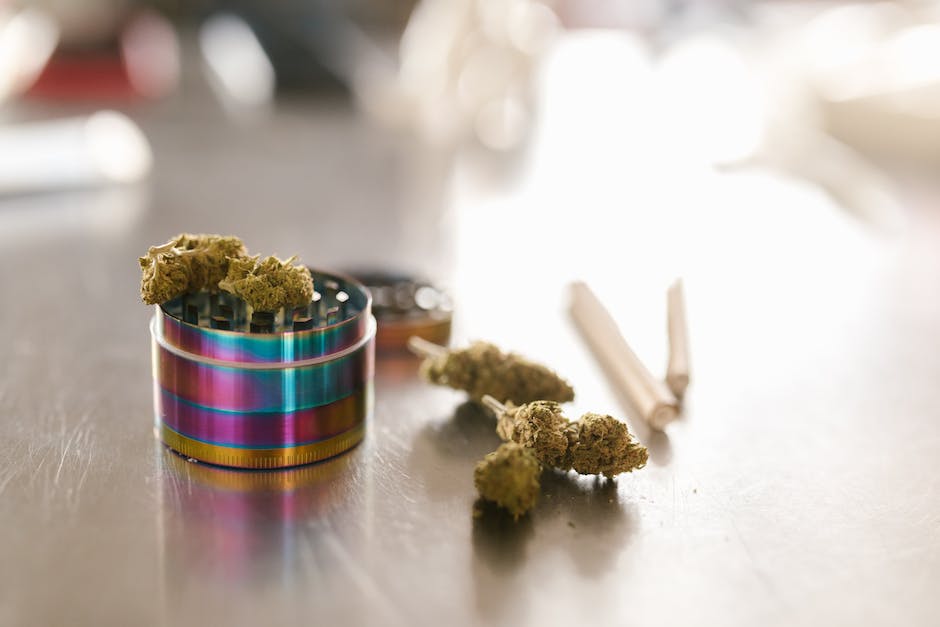Although cannabis has many uses for humans, it is not appropriate for use as a medicine to treat or manage pets. The wrong dosage can be harmful or even deadly to your pet!
Many people believe that marijuana makes dogs “go crazy” and want to experiment with using it for their dog. This isn’t true- while THC (the compound in cannabis that gets you high) may have an effect on some animals, CBD (an active ingredient of medical cannabis) does not seem to have this side effect.
Instead, research shows that cannabinoids are very effective at treating certain types of cancer and other health conditions in dogs and cats. There are actually several studies proving this!
If you would like to try cannabis for medicinal purposes for your canine companion, then there are two ways to go about it. First, you can find pure CBD oil that is medically acceptable and administer it directly under the tongue or by mixing it into food.
Second, you can take dried flowery bud material of medical grade cannabis and mix it into liquid or chewable foods. Both methods should be done only under professional supervision because excessive exposure could be too much for someone inexperienced.
Cannabis for Dogs – Conclusion
Using cannabis medicinally for dogs is not recommended due to limitations in effectiveness and risk of harm. Only use this product under professional guidance and keep a close eye on your pet for any changes in behavior or appearance.
Effects of cannabis on pets

Although marijuana is illegal in most jurisdictions, it has many uses that have little to do with getting high. Many owners use weed to treat their dogs or cats suffering from allergic reactions or health issues.
Some studies show that cannabinoids can help reduce pain in animals with degenerative diseases such as osteoarthritis. Medical marijuana is already used to alleviate symptoms in humans with chronic pain conditions, so there are proven benefits!
Because CBD comes from the plant material rather than the oil extracted from the plants, it does not produce the same psychoactive effects as THC. That means you can use much higher doses of CBD to achieve the same results.
However, like any other drug, if too much is given, then negative side effects will occur. As with people, some dogs are more sensitive to drugs than others.
So, while using cannabis may seem appealing to add additional relief to your pet’s treatment, you should do research first to see if it is safe for them.
Safe dosing of cannabis for pets

As discussed earlier, marijuana can have some very serious side effects when consumed by humans. For dogs or cats that drink enough water to be thirsty, eating any amount of dried marijuana may actually result in them drinking too much water!
Interacting with other animals while under the influence of THC is also an extremely dangerous situation. Animals exposed to marijuana during gestation may suffer from developmental issues such as mental and physical disabilities.
Research shows that people who use marijuana frequently are at higher risk of developing heart disease than individuals who never consume it. This increased risk comes not only from smoking the drug but also from its oral consumption, dabbing (vaporizing)–which contains more harmful chemicals-and ingesting it.
Cannabis has no safe level for human consumption, so why would we think it’s safer for our furry friends? Fortunately, there are ways to administer CBD to your dog without consuming any alcohol or tobacco products. You can mix it into their food or give it to them orally in liquid form like drops or capsules.
There are even tinctures you can make at home that contain CBD oil! Because CBD does not cause intoxication in dogs, giving appropriate doses will not affect behavior or activity levels. While research is limited about using CBD for veterinary purposes, many owners report positive results and improved quality of life for their beloved companions.
Benefits of cannabis for pets

Medical marijuana has gained popularity in recent years, with many using it to help treat or improve the health and behavior of their dogs and cats. There are several reasons why people use cannabis for animals.
Some believe that smoking is the best way to administer CBDs (cannabidiol), a compound found in hemp oil that has medical benefits. For this reason, some veterinarians prescribe medication packed in oils that can be put under a dog’s tongue or mixed into food.
Many owners also report positive results from administering oral doses of CBD. Because dogs cannot swallow air, they have to ingest their medicine by eating or drinking.
Some reports indicate that CBD may reduce inflammation and pain, while other studies show that it helps promote sleep and relaxes muscles. Since anxiety and stress can cause your pet to suffer from excessive adrenaline and cortisol levels, THC-rich products can aid in relaxation and calming down, helping your furry friend feel better.
CBD does not produce the same effects as THC, the psychoactive component of cannabis. Therefore, you will need to make sure your pet is never exposed to enough THC to get these benefits!
Warning: Never give your pet any type of drug, including herbal supplements, without first talking to your doctor.
Potential side effects

While most people enjoy smoking or consuming cannabis, it is important to know that some modes of consumption can have unexpected results when applied to our pets.
Some common potential side effects of marijuana include changes in behavior, agitation, hallucinations, seizures, vomiting, diarrhea, dry mouth, problems breathing, cardiovascular issues and liver damage.
These symptoms usually go away within hours-days if the pet’s owner takes appropriate action. If you notice any of these symptoms, call your vet right away!
It is very difficult to estimate how much THC (the active compound in marijuana) an individual dog will ingest from cannabis products. Even if a product says it has low THC content, dogs are still sensitive to cannabinoids so do not assume it will be fine.
Thoroughly review all ingredients of any CBD oil before giving it to your pet. Also, research what amounts of THC are needed to treat certain conditions in humans. Many human studies cannot determine whether there truly was health benefit because researchers were unable to separate the effect of the drug from placebo.
However, many believe that lower doses are more effective than higher ones due to less chance of experiencing unwanted consequences.
Consider your pet’s environment

Beyond whether or not your dog or cat is allergic to cannabis, another factor to consider is how much exposure they are getting outside of marijuana products. If you give your animal any type of oral dose, for example ingesting hemp oil as treatment for cancer or dry skin or ear issues, then there is a chance their body will react to it.
Some pets have very sensitive stomachs, so an overdose could occur. While most dogs and cats are bred with strong immune systems, like humans, we know that genetics play a large role in health too!
Interacting with other animals, environmental allergies, and certain foods can weaken their protective barriers, making them more susceptible to disease. The number one cause of death among domesticated animals at shelters across America is infectious disease.
That is why it is important to expose your pet to other things, particularly around food sources. Many holistic veterinarians recommend limiting sugar intake and feeding only commercially prepared diets, but this may be difficult to do if your pet enjoys special treats.
Speak with your vet about dosing

While there is no approved cannabis product that contains only CBD, some vets are willing to discuss administering hemp oil or tinctures instead of tablets or oils as a treatment for symptoms or conditions.
Some vets may feel more comfortable prescribing CBD than THC due to potential side effects like dry mouth and vomiting.
For example, when we had our dog who was suffering from intractable epilepsy, her doctor would give us either 5 mg of CBD per kilogram body weight or 2 percent THC.
She would not say which one was better because it did not make a difference but she hoped for the best with each dose!
By being aware of what products exist and speaking with your vet about them, you can help improve their treatments for your pet.
Multiply your dose by your pet’s weight

Even if you don’t give yourself a high dose, just giving your dog or cat one cannabis product can help them deal with certain symptoms. For example, CBD may reduce muscle tremors in dogs with neurological conditions like epilepsy.
Some people also use cannabis to treat pain in their pets, but there aren’t many studies done yet to see how well it works. Many vets feel that while marijuana has some benefits for humans, it isn’t effective for animals.
There are several ways to administer cannabis to your canine companion. You can make an oil mix, bake cookies, or soak dried weed in liquid to create tea.
Keep your pet on a schedule

It is important to keep your dog or cat on a regular feeding, grooming, exercise, and play routine to ensure they are still functioning properly. If you notice changes in their behavior or moods, it may be due to cannabis use.
Some of these effects include agitation, pacing, aggression, hyperactivity, sleep disturbances, and more. These symptoms can last weeks after drug usage comes to an end so it is best to address them as early as possible.
Making sure your pet has adequate rest and nutrition will help mitigate some of these issues. Also, working out and/or starting a fitness program for your furry friend can help promote relaxation.
Regular veterinary checkups are necessary to determine if there are any health conditions that could be related to cannabis use.
It is very difficult to tell whether your beloved pet was exposed to marijuana by looking at them, but certain things may indicate exposure. Veterinarians can test hair, blood, urine, and feces for THC (the main compound in cannabis).
Sadly, many dogs and cats ingest cannabis accidentally during times when owners forget to prevent access! Fortunately, CBD does not produce the same effects in pets like it does in humans.





